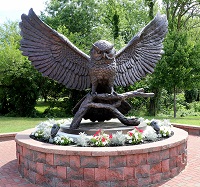Document Type
Presentation
Presentation Date
Fall 2021
Description
Learning objectives:
- Understand basic definitions and common applications of remote sensing technology
- Know how to acquire freely available remotely sensed imagery
- Learn how remotely sensed data can be used to visualize different land covers on Earth’s surface in a GIS
Description:
Remote sensing is defined as the acquisition of information about an object or phenomenon without making physical contact with the object. This means that the human eye taking in visible light reflected by objects is technically remote sensing! But the science of remote sensing is generally based on the scanning of the Earth by satellite or aircraft in order to obtain information, usually electromagnetic radiation, about the surface. For example, certain waves of radiation (specifically, microwaves) can be used to distinguish between clouds, sea ice and ocean water. Or, the relationship between certain waves of light (red and infrared) can inform on the health of plants. Essentially, remote sensing uses the electromagnetic spectrum to distinguish between, and measure changing conditions of, different land covers on Earth. In this workshop, participants will learn the basics of remote sensing science and technology, common applications of remote sensing, how to acquire remotely sensed imagery and use spectral information to highlight properties of different land covers on Earth’s surface in a Geographic Information System.
Skill levels for attendees: Little to no experience
Software requirements: None
Creative Commons License

This work is licensed under a Creative Commons Attribution-NonCommercial-Share Alike 4.0 International License.
Recommended Citation
York, Ashley, "Eyes in the Sky: An Introduction to Remote Sensing" (2021). Library Workshops. 13.
https://rdw.rowan.edu/libraryworkshops/13
Workshop recording


Comments
Recording of workshop is available below.